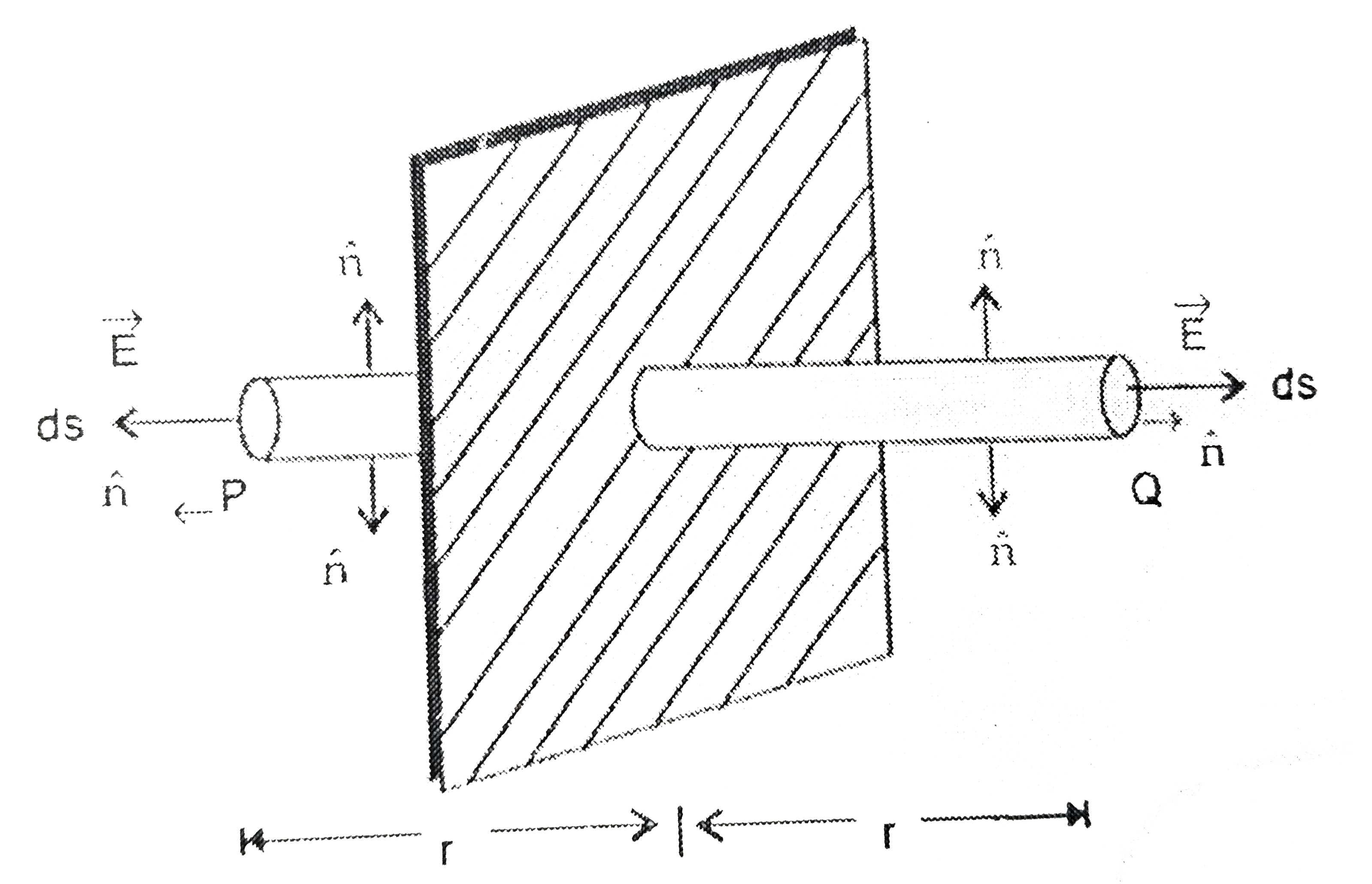State Gauss's law in electrostatics. Using this law derive an expression for the electric field due to a uniformly charged infinite plane sheet.
Electric field due to a uniformly charged infinite plane sheet : Suppose a thin non-conducting infinite sheet of uniform surface, charge density σ.
Electric field intensity on either side of the sheet must be perpendicular to the plane of sheet having same magnitude at all points equidistant from sheet.
Let P be any point at a distance r from the sheet.
Let the small area element →E=dsˆn
→Eandˆn are perpendicular, on the surface of imagined cylinder, so electric flux is zero.
→Eandˆn are parallel on the two cylindrical edges P and Q, which contributes electric flux.
∴ Electric flux over the edges P and Q of the cylinder is
2ϕ=q∈0⇒2∮→E.→ds=q∈0 [∵ϕ=∮→E.dec(ds)]

2∮→E.→ds=q∈0
2∮Eds=q∈0 [∵→E⊥→ds]
2Eπr2=q∈0⇒E=q2π∈0r2
∴ The charge density σ=qS⇒q=πr2σ [where S-area of circle]
E=πr2σ2π∈0r2E=σ2∈0 ∴ vecotrically →E=σ2∈0ˆn
where ˆn is a unit vector normal to the plane and going away from it.
When σ>0, E is directed away from both sides. Hence electric field intensity is independent of r.
When σ>0, E is directed away from both sides. Hence electric field intensity is independent of r.
Note : For conducting sheet, the surface charge density on both the surface of sheet will be same
∴E=σ∈0
Topper's Solved these Questions
- XII BOARDSBook:XII BOARDS PREVIOUS YEARChapter:XII BOARDSExercise:SET III
Explore 9 Videos
- XII BOARDSBook:XII BOARDS PREVIOUS YEARChapter:XII BOARDSExercise:SET-I
Explore 165 Videos
- XII BOARDSBook:XII BOARDS PREVIOUS YEARChapter:XII BOARDSExercise:SET I
Explore 70 Videos
- SAMPLE PAPER 2019Book:XII BOARDS PREVIOUS YEARChapter:SAMPLE PAPER 2019Exercise:SECTION D
Explore 6 Videos
Similar Questions
State Gauss' law in electrostatic.
View SolutionState Gauss's law in electrostatics. Use this law to derive an expression for the electric field due to an infinitely long straight wire of linear charge density λcm−1
View SolutionState Gauss's law on electrostatics and derive an expression for the electric field due to a long straight thin uniformly charged wire (linear charge density ) at a point lying at a distance r from the wire.
View SolutionState Gauss' law in electrostatic. Using it derive an expression for the electric field due to an infinitely long straight wire of linear charge density λ C/m.
View SolutionState and prove Gauss's law in electrostatics.
View SolutionDerive an expression for electric field intensity E due to an infinite place sheet of charge.
View SolutionThe expression for electric field intensity at a points outside uniformly charged thin plane sheet is (where, d is the distance of point from plane sheet)
View SolutionState Gauss's theoram in electric field at a point due to a uniformaly charged infinite plane thin sheet.
View SolutionUsing Gauss’ law, derive an expression for the electric field at a point near an infinitely long straight uniformly charged wire.
View SolutionUsing Gauss's law, derive an expression for the electric field intensity at any point near a uniformly charged thin wire of charge/length=λC/m.
View Solution